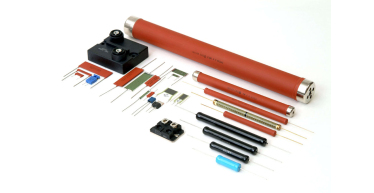Choosing a Power Resistor
Selecting the right power resistor for your application can be a daunting task. With a myriad of options available, engineers are often faced with a maze of specifications and technical jargon. However, understanding key factors and considerations can streamline the selection process and ensure optimal performance of your electronic systems.
Here’s What Engineers Need to Know When Choosing a Power Resistor
Power Rating
One of the most critical factors to consider is the power rating of the resistor. This refers to the maximum amount of power the resistor can dissipate without overheating or failing. Ensure that the power rating of the resistor exceeds the maximum power dissipation expected in your application to prevent thermal issues and ensure reliability.
Resistance Value
The resistance value of the resistor determines its ability to control current flow in the circuit.
Select a resistor with the appropriate resistance value to achieve the desired voltage drop or current limitation in your application.
Tolerance
Resistor tolerance indicates the deviation of the actual resistance value from the specified nominal value. Choose a resistor with a tolerance that meets the accuracy requirements of your application to ensure precise circuit operation.
Temperature Coefficient
The temperature coefficient of resistance (TCR) indicates how the resistance of the resistor changes with temperature. For applications where temperature stability is crucial, such as precision instrumentation or temperature control circuits, select resistors with low TCR values to minimize drift over temperature.
Construction Type
Different construction types, such as ceramic, thick film, and wirewound offer varying performance characteristics. Consider factors like stability, accuracy, power handling capability, and cost when choosing the appropriate construction type for your application.
Environmental Conditions
Evaluate the operating environment of your application, including factors such as temperature, humidity, vibration, and shock. Choose resistors with suitable environmental ratings and robust construction to withstand the specified conditions and ensure long-term reliability.
Mounting and Packaging
Consider the mounting method and package size of the resistor to ensure compatibility with your circuit layout and mechanical constraints. Surface mount resistors (SMD) are ideal for compact and automated assembly, while through-hole resistors are suitable for prototyping and applications requiring high-power handling.
Special Features
Some applications may require specialized features such as high pulse power handling, non-inductive construction, or flame-resistant coatings. Select resistors with additional features that align with the specific requirements and performance criteria of your application.
By carefully evaluating these factors and understanding the requirements of your application, you can confidently select the most suitable power resistor to meet your needs. Consult with experienced suppliers or engineers if you encounter any challenges or uncertainties during the selection process. Remember, choosing the right resistor is essential for achieving optimal performance, reliability, and longevity of your electronic systems.

Types of Power Resistors
Power resistors play a crucial role in various electronic circuits, serving as essential components for controlling current flow and voltage levels.Call now!
Read More
Power Resistor Applications
Power resistors are indispensable components in electronic applications, serving as vital elements for controlling current flow and maintaining stability. Call now!
Read More